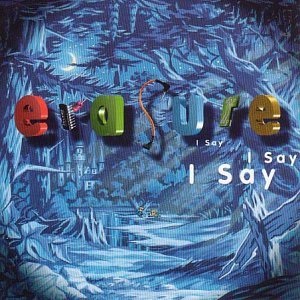(#503: 18 June 1994, 1 week)
Track listing: The Real Thing/Do What I Like/Here I Go/Burning Like Fire/Info Superhighway/Hypnotised/Tuning Into Something Wild/Escape In Music/Sensuality/No One/Face To Face/What’s Mine Is Mine/Nothing Like The Rain
“Every song [on the album] is a potential top 10 record,” raved a man of no importance, reviewing Real Things in Smash Hits, adding that: “for techno…mayhem, you can’t beat Real Things.” At the same time, the NME decided that it finally liked 2 Unlimited and gave this album 8 out of 10.
Typically, the music press prefects got on the act’s case one album too late (see also, in the nineties, Mercury Rev and Destiny’s Child inter alia). No Limits should have received the above glowing notices, and Real Things can only be considered a gross disappointment in comparison. It gets off to a decent, if not too thrilling, start, with some cat-and-mouse bits of toccata business, but it soon becomes very apparent that PWL International were right to leave out, or cut up, Ray Slijngaard’s raps on the previous record; a little of his stolid wordiness goes a very long way.
The album is otherwise anaemic. Disastrously, Messrs de Costa and Wilde appear to want to have put away childish things and progressed, and so the beats are underbeaten, the pace is all too leisurely, the productions too reticent; it is hard to view Real Things as anything other than standard off-the-peg early nineties Europop songs with glutinous rapping appended. Two-and-a-half years hence, the Prodigy’s “Breathe” will musically sound a little like “Burning Like Fire,” and the dancehall and ballad forays are in exactly the same place as they were on the record’s predecessor.
Overall, however, it is studium pop all the way; dull, clichéd and probably already sounding dated in the week of its release. As far as dance music was concerned, it wasn’t even 1993 any more; the circus had moved on and suddenly they found themselves to be 2 Actually Quite Limited. As for potential top 10 records, the single of “The Real Thing” peaked at number six, and the subsequent two singles, “No One” and “Here I Go” at numbers 17 and 22 respectively. They have not been remembered, and neither were Anita Doth or Mr Slijngaard, who in 1998 were summarily replaced by two thoroughly anonymous Dutch session singers. I fear this is not the only occasion in 1994 when people who ought to have known better boarded the dance bandwagon after it had fled the arena.
(This is, however, the last post for a while as Then Play Long is now taking an extended Easter break. We return on 6 April with an album which took fifteen months to get to number one. Buona Pasqua a tutti.)

.jpg)
